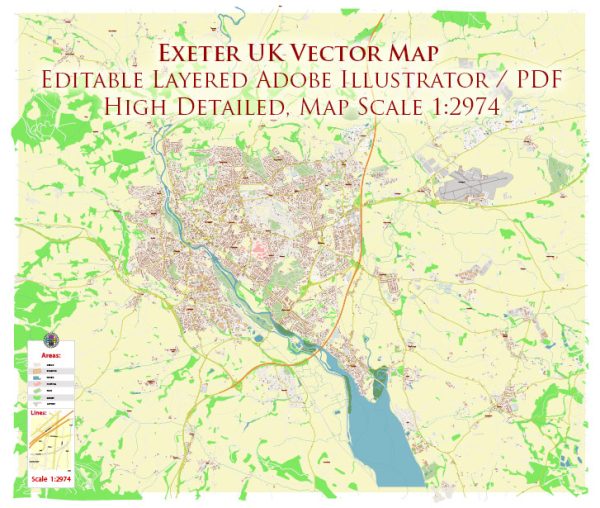Exeter, located in the southwest of England, has a rich history of urban development that spans over two thousand years. Here is a brief overview of key historical periods in the urban development of Exeter:
- Roman Period (AD 55-410): Exeter, known as Isca Dumnoniorum during Roman times, was a significant Roman settlement in Britannia. The Romans established a fortress here around AD 55 and later developed it into a thriving town. The city’s layout included a basilica, forum, and public baths. The city was an important administrative and military center.
- Anglo-Saxon Period (410-1066): After the Roman withdrawal, Exeter continued to be inhabited. During the Anglo-Saxon period, the city became one of the most important centers in the kingdom of Wessex. The Saxons strengthened the city’s defenses, and it became known as Exanceaster. The cathedral, dedicated to St. Peter, was founded in the 7th century.
- Medieval Period (1066-1485): Exeter continued to grow in importance during the medieval period. The city’s walls were constructed, and it became a center for trade, with a flourishing woolen cloth industry. The cathedral was rebuilt in the Gothic style after a fire in 1133. Exeter’s historic guildhall, which still stands today, dates back to the 12th century.
- Tudor and Stuart Periods (1485-1714): The Tudor and Stuart periods saw further expansion and development in Exeter. The city’s economy thrived, and architectural styles evolved. However, Exeter also faced challenges, including the plague outbreaks and the Civil War. The city was besieged and suffered damage during the war, but it was later rebuilt.
- Georgian and Victorian Eras (1714-1901): During the Georgian and Victorian periods, Exeter experienced significant urban expansion and modernization. The city’s medieval walls were largely replaced by wider roads, and new neighborhoods emerged. The industrial revolution brought changes to the economy, and the railway arrived in the mid-19th century, connecting Exeter to the rest of the country.
- 20th Century to Present: Exeter continued to grow and develop in the 20th century. The city faced bombing during World War II, resulting in damage to some historic buildings. Post-war reconstruction efforts aimed at preserving the city’s heritage while accommodating modern needs. In recent decades, Exeter has experienced urban renewal, with efforts to balance historic preservation and contemporary development.
Today, Exeter is a vibrant city that seamlessly blends its rich history with modern amenities. The cathedral, medieval buildings, and city walls stand as reminders of its long and varied past, while contemporary developments contribute to its dynamic urban landscape.


 Author: Kirill Shrayber, Ph.D.
Author: Kirill Shrayber, Ph.D.